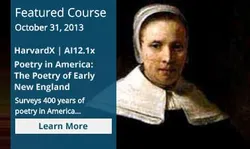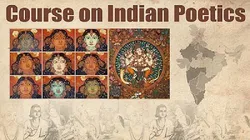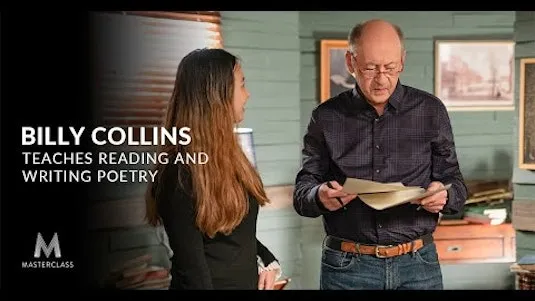
Poetry: What It Is and How to Understand It 
This course, Poetry: What It Is and How to Understand It, will explore the beauty and power of poetry. Learn to define and distinguish between good and bad poetry, and understand why writing poetry can be difficult. Discover the truths that modern poetry conveys and explore poetry in English and in translation. Unlock the power of poetry and gain a deeper appreciation for this art form. ▼
ADVERTISEMENT
Course Feature
![]() Cost:
Cost:
Free
![]() Provider:
Provider:
Udemy
![]() Certificate:
Certificate:
No Information
![]() Language:
Language:
English
![]() Start Date:
Start Date:
On-Demand
Course Overview
❗The content presented here is sourced directly from Udemy platform. For comprehensive course details, including enrollment information, simply click on the 'Go to class' link on our website.
Updated in [April 29th, 2023]
This course, Poetry: What It Is and How to Understand It, will provide an overview of the genre of poetry writing. Students will learn to define poetry, discuss its particular attributes, distinguish between good and bad poetry, explain why writing poetry is difficult, and isolate the sorts of truths modern poetry conveys. The course will focus on modern poetry, both in English and in translation. Through lectures, readings, and discussions, students will gain an understanding of the genre and its various forms.
[Applications]
The application of this course is to gain a better understanding of poetry and its various forms. Students can use the knowledge gained from this course to analyze and interpret poetry, as well as to create their own. They can also use the course to gain insight into the various truths that modern poetry conveys. Additionally, students can use the course to gain an appreciation for the art of poetry and its importance in various cultures.
[Career Paths]
1. Poetry Editor: A Poetry Editor is responsible for reviewing and editing poetry submissions for publication. They must have a deep understanding of the craft of poetry and be able to identify and nurture talent. They must also be able to work with authors to ensure that their work meets the standards of the publication. The demand for Poetry Editors is increasing as more publications are looking to feature poetry in their content.
2. Poetry Teacher: Poetry Teachers are responsible for teaching students the fundamentals of poetry and helping them to develop their own writing skills. They must have a deep understanding of the craft of poetry and be able to identify and nurture talent. They must also be able to work with students to ensure that their work meets the standards of the school. The demand for Poetry Teachers is increasing as more schools are looking to include poetry in their curriculum.
3. Poetry Critic: A Poetry Critic is responsible for reviewing and analyzing poetry for publication. They must have a deep understanding of the craft of poetry and be able to identify and critique the work of others. They must also be able to provide constructive feedback to authors to help them improve their work. The demand for Poetry Critics is increasing as more publications are looking to feature poetry in their content.
4. Poetry Writer: A Poetry Writer is responsible for creating original poetry for publication. They must have a deep understanding of the craft of poetry and be able to create compelling and meaningful works. They must also be able to work with editors to ensure that their work meets the standards of the publication. The demand for Poetry Writers is increasing as more publications are looking to feature poetry in their content.
[Education Paths]
1. Bachelor of Arts in English Literature: This degree path focuses on the study of literature, including poetry, from a variety of historical and cultural perspectives. Students will learn about the history of literature, literary theory, and the craft of writing. They will also gain an understanding of the various forms of poetry, including modern poetry, and how to interpret and analyze them. Developing trends in this field include the use of digital technologies to analyze and interpret literature, as well as the use of creative writing techniques to explore the power of poetry.
2. Master of Arts in Creative Writing: This degree path focuses on the craft of writing, including poetry. Students will learn about the fundamentals of writing, including the use of language, structure, and form. They will also gain an understanding of the various forms of poetry, including modern poetry, and how to create and develop their own works. Developing trends in this field include the use of digital technologies to create and share poetry, as well as the use of creative writing techniques to explore the power of poetry.
3. Doctor of Philosophy in Poetry: This degree path focuses on the study of poetry from a variety of historical and cultural perspectives. Students will learn about the history of poetry, poetic theory, and the craft of writing. They will also gain an understanding of the various forms of poetry, including modern poetry, and how to interpret and analyze them. Developing trends in this field include the use of digital technologies to analyze and interpret poetry, as well as the use of creative writing techniques to explore the power of poetry.
4. Master of Fine Arts in Poetry: This degree path focuses on the craft of writing, including poetry. Students will learn about the fundamentals of writing, including the use of language, structure, and form. They will also gain an understanding of the various forms of poetry, including modern poetry, and how to create and develop their own works. Developing trends in this field include the use of digital technologies to create and share poetry, as well as the use of creative writing techniques to explore the power of poetry.
Pros & Cons

Enjoyable lectures

Comprehensive course

Passionate and knowledgeable presenter

Inspiring and thoughtprovoking

Easy to follow

No lecture notes in text form

Lack of current works

No interactive pedagogy
Course Provider

Provider Udemy's Stats at AZClass
Discussion and Reviews
0.0 (Based on 0 reviews)
Explore Similar Online Courses

Learn JavaScript

Intro to Deep Learning with PyTorch

Python for Informatics: Exploring Information

Social Network Analysis

Introduction to Systematic Review and Meta-Analysis

The Analytics Edge

DCO042 - Python For Informatics

Causal Diagrams: Draw Your Assumptions Before Your Conclusions

Whole genome sequencing of bacterial genomes - tools and applications

Poetry in America: The Poetry of Early New England

Indian Poetics


Start your review of Poetry: What It Is and How to Understand It